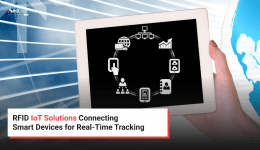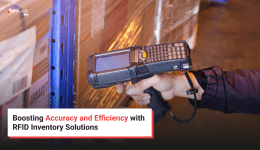RFID and IoT are different technologies, but much the same when it…

AI-Driven SaaS Solutions Transforming Cloud Services
Businesses are adapting the technologies to stay ahead in the digital transformation…
How to Choose the Right AI Consulting Firm for your Business
It can be noticed that competition is increasing at a rapid pace…
Boosting Accuracy and Efficiency with RFID Inventory Solutions
Inventory management has been a challenging aspect for many businesses as it…
RFID Industrial Solutions for Smart Asset Management and Automation
Every industrial operation today is asking one critical question—“Where exactly are our…
How Custom AI Software Solutions Improve Business Efficiency
The business industry has been developed and advanced by implementing various technologies…
Best Generative AI Solutions Providers for Businesses in 2025
Having every resource, equipment, and employee can run businesses but it is…
How AI & Digital Transformation are Changing Healthcare
The Healthcare industry is trying its best to treat patients but in…
Generative AI Solutions Provider in India
Generative AI is revolutionizing industries worldwide, and India is emerging as a…










